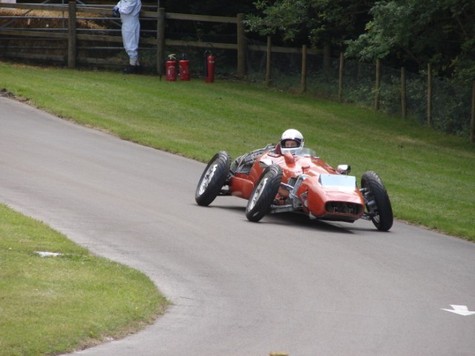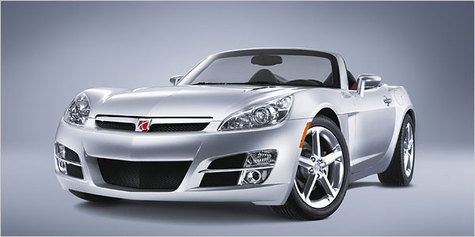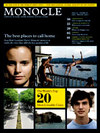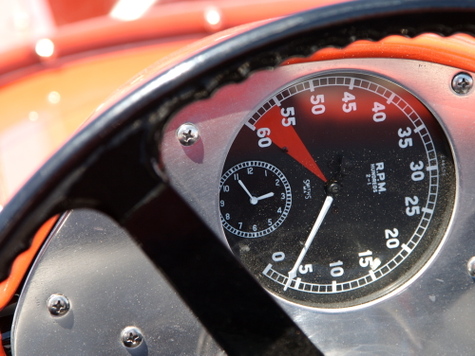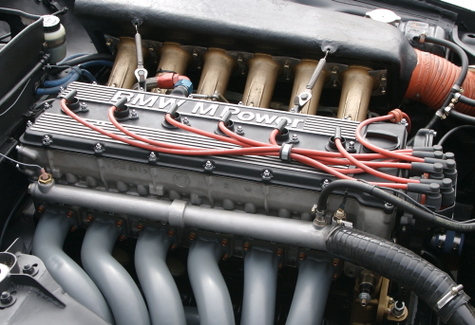"The beauty of Italy continues to amaze me. Maybe you need to be non-Italian, new to the country, to really notice it. I love it here. Every day feels like a Sunday."
Author Archives: Diego Rodriguez
Power is the greatest…
… way to release your inner jerkdom.
A really chilling study: More Evidence that Getting a Little Power Turns You into a Self-Centered Jerk
Director’s Commentary: John Barratt on the Boeing Dreamliner
Here’s a great Director’s Commentary centering on the new Boeing Dreamliner. In this video interview, Fortune’s David Kirkpatrick interviews Teague CEO John Barratt about the development of the Dreamliner’s passenger experience. I enjoyed hearing about the design process used to get to the final result, which looks quite promising.
Though I have to admit that at a personal level I’m a bit reticent to fly in a plane made largely of carbon fiber, I do admire Boeing’s return to a structural paradigm pioneered by aircraft of seventy years ago, such as the innovative Lockheed Vega, piloted by the equally groundbreaking innovator Wiley Post.
I had the pleasure of meeting John at DMI’s International Design Management Conference last year, and we will both be speaking at a Marketing Science Institute conference in October.
A wonderful book about an amazing innovator
The past few weeks I’ve had the pleasure of making my way through a wonderful book about the amazing life and times of Bill Milliken. The title is Equations of Motion: Adventure, Risk and Innovation. An MIT engineer by training, Milliken’s varied and exciting life makes Indiana Jones seem a wimp by comparison, and places Buckaroo Banzai in the category of simpleton. Here’s his bio from the publisher of the book:
William F. Milliken was born in Old Town, Maine in 1911. He
graduated MIT in 1934. During World War II he was Chief Flight Test
Engineer at Boeing Aircraft. From 1944, he was managing director at
Cornell Aeronautical Laboratory (CAL/Calspan), retiring as the head of
the Transportation Research Division, which he founded.Bill joined the SCCA in 1946 (Competition License No. 6) and
contested over 100 races as well as holding many responsible club
positions. Milliken Research Associates was founded in 1976 and
continues as a foundational research asset to the automotive and auto
racing industries. Bill remains active in MRA, which is now run by his
son, Douglas L. Milliken.Bill is co-author of Race Car Vehicle Dynamics and Chassis Design.
He is an SAE Fellow, member of the SCCA Hall of Fame, recipient of the
SAE Edward N. Cole Award, the Laura Taber Barbour Air Safety Award and
many other citations for innovation.Today Bill lives in the Buffalo, New York area with his wife,
Barbara. He continues to consult with racing and chassis engineers. He
jogs around the half-mile track behind his home and spends several
evenings at the gym.
This book works on many levels. It’s a fascinating look at the world of aviation pre- and post-WW II. You get a ringside seat at the dawn of the sports car movement in the United States. It is an honest glimpse at what life was like in America around the turn of the Twentieth Century, and what it feels like to enter early adulthood under the weight of a major economic depression. Most of all, it’s a tribute to what it means to be a racer, to be an entrepreneur and a generative person, to get up each morning and say "How am I going to change the world today?".
I believe "design" is a verb and "innovation" is best thought of as the outcome of relatively tight set of behaviors and life attitudes embodied to their fullest by people like Bill Milliken. He designed his life, and continues to live a remarkable one today.
I love this book.
PS: if you don’t have the time (or inclination) to read Equations of Motion, please take a look at this charming profile of Milliken written by Karl Ludvigsen: Mister Supernatural
Imagining innovative behavior, vividly
I don’t believe creativity is about thinking outside of the box. I think it’s about making connections across otherwise unconnected boxes; it’s about pattern recognition.
So, if you will, please indulge me as I communicate a creative link I just made across the writing of two of my colleagues/friends/fellow bloggers, Bob Sutton and John Maeda. Lately I’ve been thinking a lot about what happens when human nature meets the need for organizations to be scalable and sustainable, and I think Professors Sutton and Maeda have — quite independently — hit upon a key point. First, Maeda:
When I was younger, I often tended to think the worst of others when
I felt sleighted in some seemingly unfortunate way. "I have been
wronged because other person X has intentionally wronged me with motive Y." I punish the other person by publicly expressing person X’s (alleged and) imagined motive Y.Often you discover that your imagination has done its work the way it
should — it imagined something happened in elegant detail without ever
actually happening. The net result is not only embarrassment, but even
worse your own poor intentions or habits with respect to others are
revealed. You imagine most vividly what you do yourself.The best route is to avoid situations of thinking ill of others by
enacting exemplar behaviors yourself. You are likely to be in a better
position as you are in a better mood and more resilient to adopting
negative behavior — thus affecting your surrounds with the positive
energy necessary to do amazing things in this world.
And then Sutton, as expressed in two points from his "15 Things I Believe" manifesto:
I believe quite strongly that people are more likely to engage in innovative behavior when they are in a flow-like state of happiness. It’s hard to be innovative when you are unhappy yourself, because as Maeda says, "You imagine most vividly what you do yourself." And it’s hard to engage in innovative, value-creating behavior when you’re only looking out for Number One — all the innovative cultures I’ve had the pleasure to work in were notable for their relative lack of narcissistic behavior. If, as Sutton says, "… unvarnished self-interest is a learned social norm…", then innovative behavior should be one, too. People aren’t innovative or not, but their behaviors, thoughts, and attitudes are.
Thank you for the connection, John and Bob.
Why is the Sky high?
Before the Saturn Sky was released to market, I wrote an essay for BusinessWeek talking about why, if I were to buy a sports car, the Sky would be at the top of my list. My point was that it’s not just about the car — it’s about what the ownership experience should be and can be. In other words, it’s about brand, where brand is about what you do rather than what you say you do.
The New York Times ran an article today titled 2 G.M. Brands, a Similar Car, but Very Different Results. It compares and contrasts the wildly different market fortunes of the Pontiac Solstice and the Saturn Sky, which share a common platform and the majority of their mechanical bits:
Sales of the Solstice are down 19 percent this year through July,
and G.M., which apologized for not building enough Solstices initially,
now has nearly a five months’ supply in inventory, double the
carmaker’s average. Sales of Pontiac-branded cars and trucks are off 17
percent, compared with 9 percent for all eight G.M. nameplates,
according to Autodata, which tracks industry statistics.“It was
such a radical departure from what people expected out of Pontiac that
it created a tremendous buzz when it first hit the market,” said Wes
Brown, an automotive consultant and a partner in the Los Angeles
marketing firm Iceology. “It looks pretty cool, but ultimately it’s not
able to overcome some of those barriers people have within their mind
with regard to the brand image.”Meanwhile, demand for the
Solstice’s fraternal twin, the costlier and more angular Saturn Sky,
has shown no signs of subsiding. G.M. has about one month’s worth of
the Sky available, and many buyers still have to wait several weeks or
months for their Sky to arrive.
From a behavioral design perspective, they’re virtually identical but where they depart is in their visceral design elements — the Pontiac is swoopy mango yogurt where the Sky is crisp Prada suit — and in their reflective design elements. The latter is touched on briefly in the article, but I think it’s at the core of the issue here: what people buy is reflective design and, by extension, the experience of what it will feel like to participate in the brand over time. While I’m a believer where Pontiac can go (their new G8 sedan bodes to be a BMW 5-series killer), for most folks Pontiac is a golden screaming chicken decal on the hood of a muscle car piloted by a guy with a mustache. Saturn is a group of people who will help your daughter out when her car has broken down in the desert. In other words, Pontiac is about (the old, wrong) product, while Saturn is about a having a nice experience.
It’s not just about product anymore.
metacool Thought of the Day
"If you’re not prepared to be wrong, you will never come up with anything original."
– Sir Ken Robinson
Sometimes the best brainstorms…
… can happen as "estorms".
It’s all about maximizing variance. So if you can include 20,000 people instead of 20, why not go for it?
You go, Brad! Can’t wait to pay it a visit when I’m out in Boulder.
A school for learning
I’m fascinated by Fuji Kindergarten, as profiled by Fiona Wilson in Monocle magazine. Fuji Kindergarten is a school whose building was designed by Tezuka Architects.
I wish my kids could go to Fuji Kindergarten. I wish I could have gone to Fuji Kindergarten. I wish I could go now. Fuji Kindergarten, I reckon, is what happens when "chutes and ladders" meets a thought experiment about education which goes back to first principles. What makes it so unusual an educational institution is that it places the most emphasis on learning, rather than on teaching. And on students rather than teachers (and, I’d wager, on teachers rather than administrative staff…). Think about that one for a while.
Next time I travel to Japan, I’m going to try and visit Fuji Kindergarten. In the mean time, I’m going to try and apply some of its lessons to our own school project over here at Stanford, called the d.school. Perhaps we can work harder to make the architecture really support the learning process behind design thinking.
By the way, I’m beginning to really dig Monocle magazine.
Unabashed Gearhead Gnarlyness
Tachometers with telltales…
… and straight-sixes from M Power…
… rallye timepieces…
… it’s the Monterey Weekend!
Forgive my lame attempt to ape the Sound of Music. I’m just so excited about the gnarlyness I will experience over the next 48 hours or so!
I’ll be hanging around the Monterey Historics and BarCamp this weekend. Two days of atoms and bits, dorks and geeks. Drop me a line if you’ll be at either one — I’d love to meet up.
Props to the gnarly boys at Bring a Trailer for the tasty photos.




